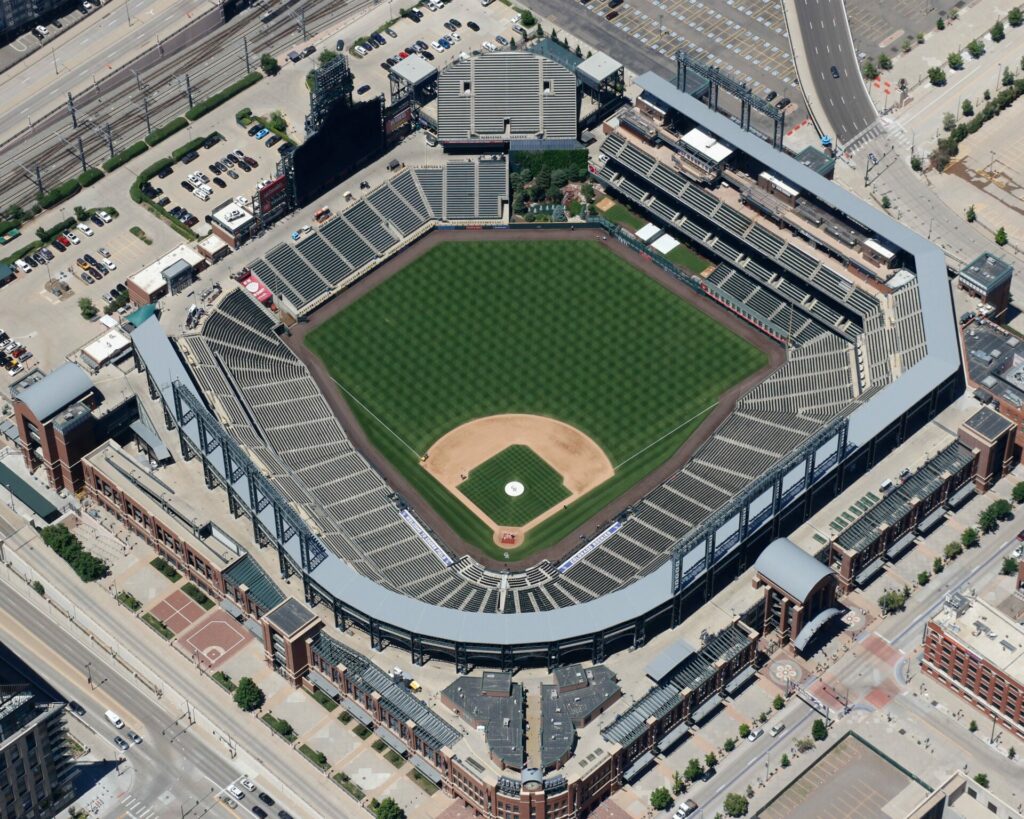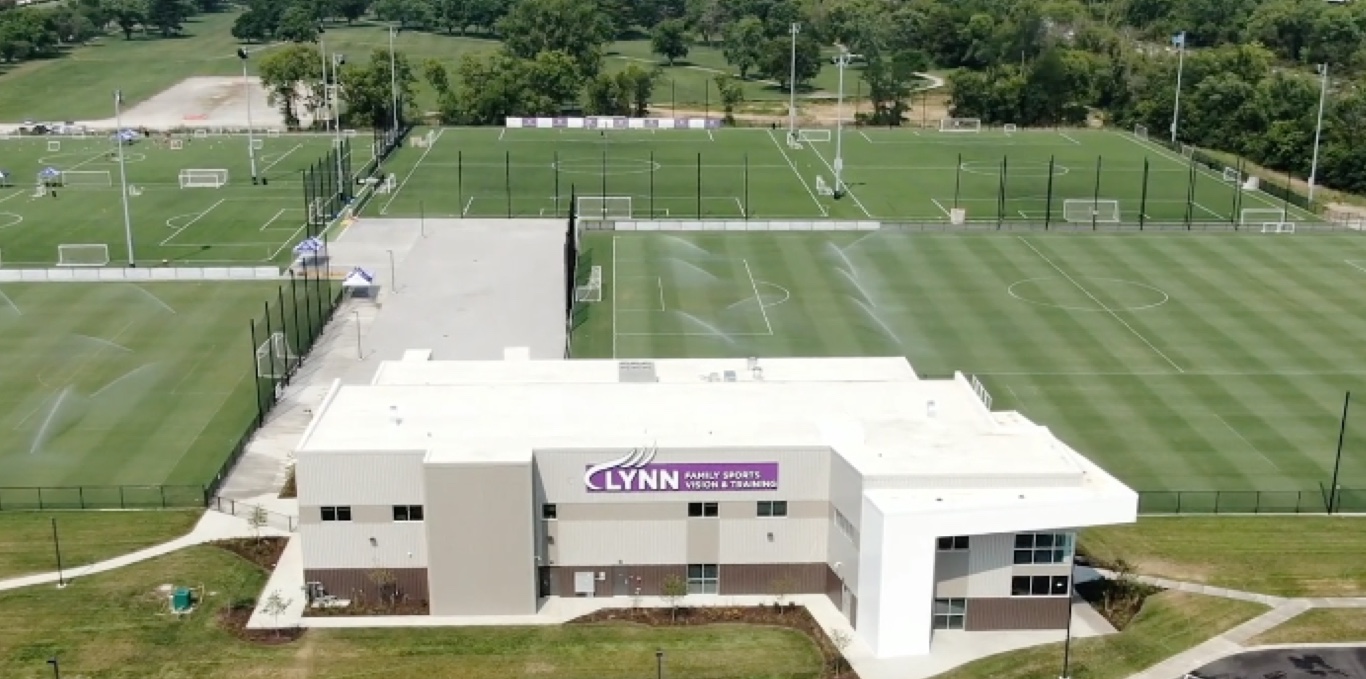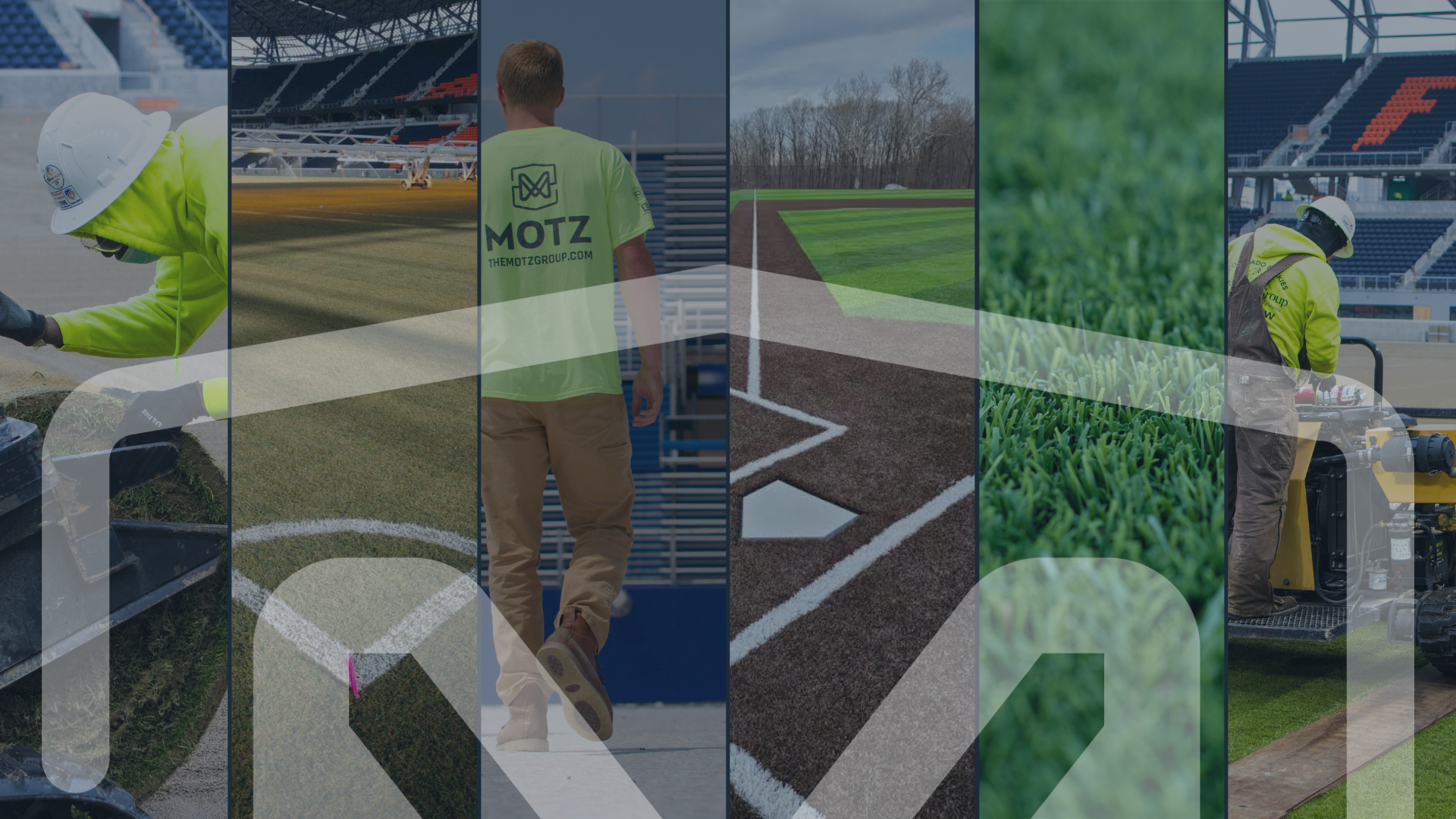
Baltimore Ravens M&T Bank Stadium
Project Overview
Motz converted the Baltimore Ravens home football field, known as M&T Bank Stadium, from synthetic turf to natural grass. Motz was selected as the field builder of choice due to its trusted reputation within the industry and its patented technology to remove the synthetic turf and infill for reuse. The ability of a field construction company to create sustainability and limit waste within its construction projects is one of the many reasons Motz is a reliable choice within the industry.
The construction process involved the removal of the old synthetic turf field and stone, including installation and testing of a new root zone, drainage, heating system, and Tifway 419 sod.
There were additional design elements added to the M&T Bank Stadium field reconstruction, consisting of an upgrade of all communication boxes on the sidelines, a permanent conduit for pylon cameras installed around the stadium, and a synthetic turf border around the field to save on maintenance costs. This project made the Baltimore Ravens’ M&T Bank Stadium, the first NFL field to have access to permanent pylon cameras surrounding the field.

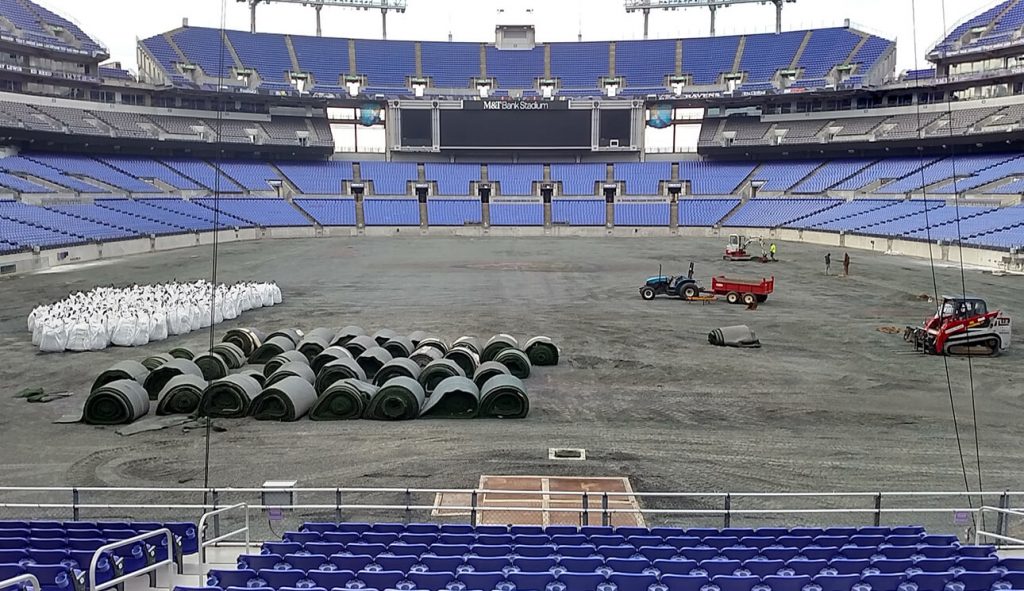
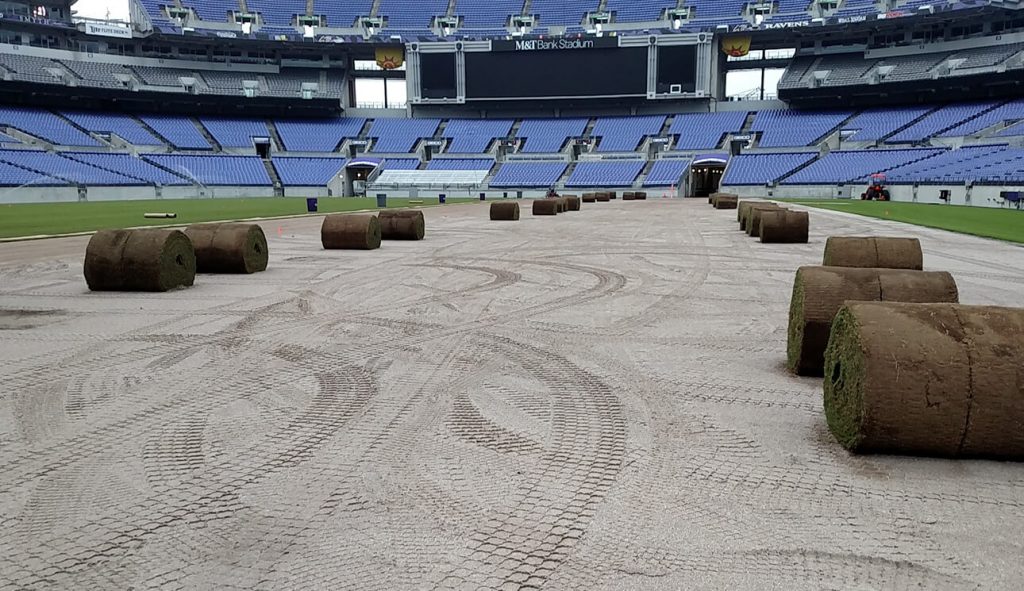
The Situation
In 2001 the Baltimore Ravens’ M&T Bank Stadium switched from natural grass to artificial grass. At that time, the natural grass field was growing in patches or not at all in some areas. The inconsistent growth of the grass was due to the field only getting three hours of sunlight from November to December. A synthetic turf field solved the problem until 2006 when the Baltimore Ravens wanted to revert to a natural playing field. The decision to change the field to grass again was because the technology had advanced to solve the grass growth problem. The M&T Bank Stadium wanted to use grow light technology from one of the leading companies in the industry named Stadium Grow Lighting (SGL) to maintain a consistent natural playing field. Motz, a trusted and experienced partner in the industry, was hired as the contractor for the reconstruction of the Baltimore Ravens’ turf field to natural grass at M&T Stadium.
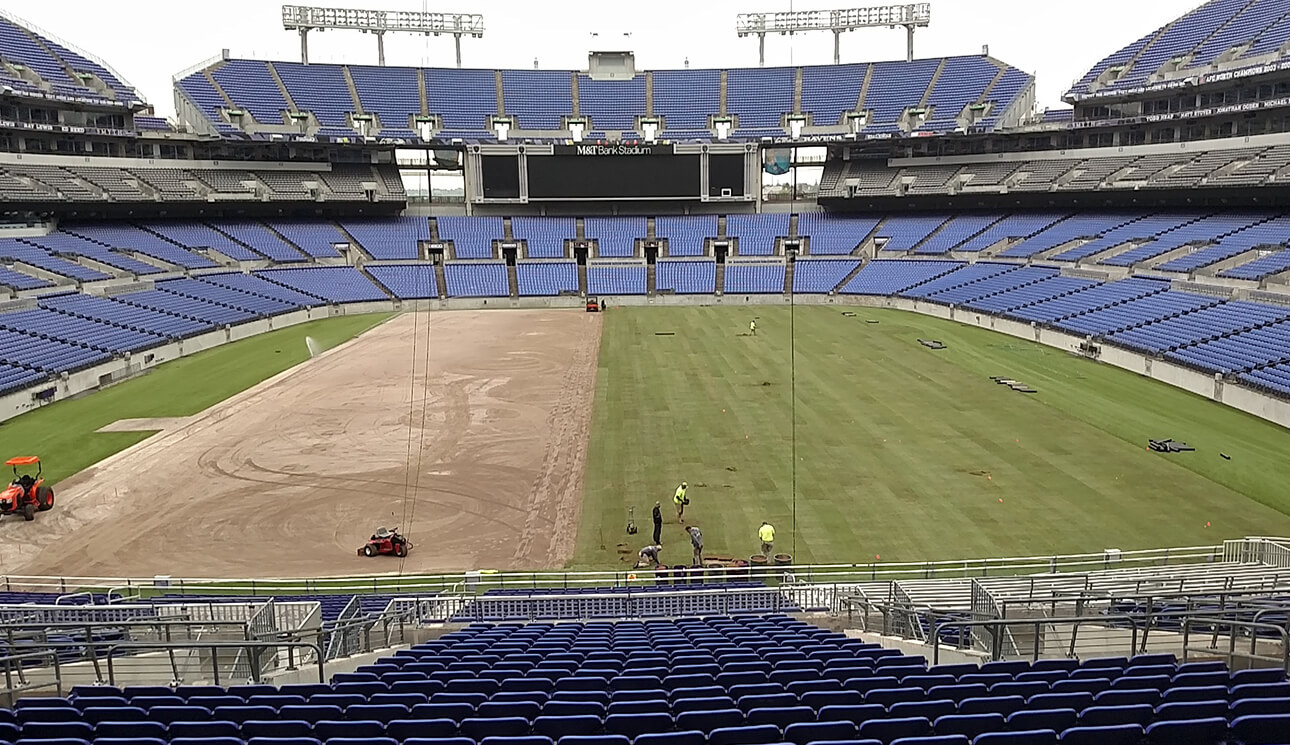

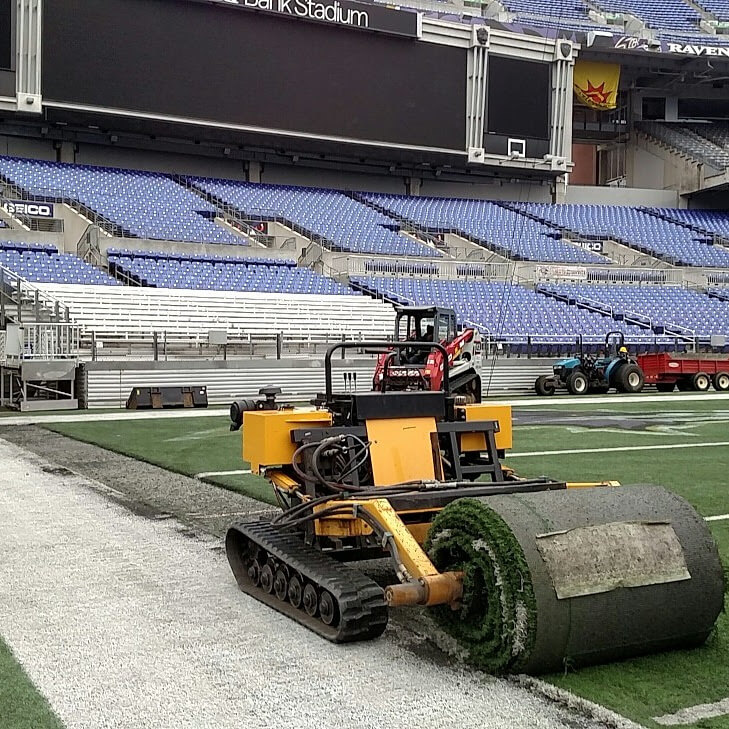

The Play
Motz first had to remove the turf and infill, which they did by using Motz’s two patented pieces of equipment for turf and infill sustainability. One of the pieces of equipment is called The Viper, which was used to cut the turf into 48 inches wide (4ft wide).
The second piece of Motz’s patented turf equipment is called The Rattlesnake, which turns the synthetic turf and shakes the infill into a super sack to be reused for other construction projects. The synthetic turf was also recycled by an attachment on the Rattlesnake, called a Sidewinder. The Sidewinder rolls up the turf into bundles to store and protect the synthetic turf for repurposing.
Motz was able to recycle both the turf and the turf infill from the Baltimore Ravens playing field due to Motz’s patented technology, which was another reason Motz was the selected contractor for the M&T Bank Stadium reconstruction.
The stone layer under the synthetic turf and turf infill was removed next. The workers dug out 6 to 8 inches of crushed rock to reach the original heating system. Motz discovered the stone layer under the heating system did not drain, which meant they had to remove all the gravel that was under the heating system, including the pipes without breaking them. The plan was to remove the heating piping first. To keep the pipes from shifting on the stone layer the heating pipes were held down with quarter-inch rebar to keep them straight and zip-tied together -13,895 zip ties were used to hold the pipes in place. Once they removed the old gravel, the workers reinstalled the heating pipes. The heating pipes, which looked like spaghetti, were then carefully installed.
Next was the tricky part, the workers had to spread the new sand rootzone across the entire field without busting a pipe. The drainage system was tested again once the new gravel was in place. After the drainage testing, a blended sand rootzone was layered on top of the new gravel and heating pipes, next the sand rootzone was laser graded which needed to be at the perfect elevation. Soil product was topdressed over the graded rootzone layer.
Motz laser graded the field to make sure it was at the correct level for an NFL playing field. Tifway 419 sod was laid over the sand rootzone. Motz did a double ring ASTM drainage testing of the new rootzone, and drainage to make sure everything was working properly.
There were additional design elements added to the M&T Bank Stadium field reconstruction, consisting of an upgrade of all communication boxes on the sidelines, a conduit for permanent pylon cameras installed around the stadium, and a synthetic turf border around the field to save on maintenance costs. This project made The Baltimore Raven’s M&T Bank Stadium the first NFL field to have permanent pilon cameras surrounding the field.
The Win
- Wow Factor: Motz met the project completion date, even though Motz had to remove and reinstall the underground heating system because there was an issue with the drainage of the field. This issue resulted in Motz’s team needing to remove all the piping without breaking it. Motz collaborated with the crew, engineering, and other contractors to meet the scope deadlines amid this unexpected predicament.
- Innovative Field Technology: A grow light technology, Stadium Grow Lighting (SGL), was installed to maintain consistent growth of the grass field for The M&T Bank Stadium. The redesign of the underground heating system was created to keep the grass field even in wet and freezing weather by controlling the heat of the rootzone of the grass no matter the temperature of the weather. Motz also installed the conduit for pylon cameras surrounding the stadium making the Baltimore Ravens the first NFL field with access boxes for pylon cameras.
- Trusted Reputation: The Baltimore Ravens’ groundskeeper knew Motz could handle the project management and construction of the renovation of M&T Bank Stadium from synthetic turf to natural grass due to the company’s experience and expertise in the industry.
- Sustainability Focused: Motz used its patented synthetic turf and turf infill removal technology to repurpose the turf and infill of the Baltimore Ravens field.

Ready to Get Started?
Interested in starting a project? Have questions about our process and products? Wherever you are in planning your dream field, we’re ready to walk through your specific needs, answer any questions you have, and talk through how our team of experts will be there to guide you every step of the way.



